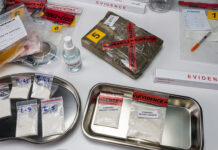News
Transgender Runner’s Top Performance in Oregon Girls’ Track Event Sparks Outrage
In Sherwood, Oregon, a high school track and field event became the center of a heated debate after a transgender athlete, Aayden...
News
NASA Quietly Training Robot Dog on Mt. Hood to Navigate Landscape of the Moon
In the scenic terrain of Mount Hood, Oregon, a robotic dog named Spirit is being rigorously trained for future space exploration missions....
News
Protesters Shut Down Southbound I-5, One Lane Has Reopened
In a recent development, the Oregon Department of Transportation (ODOT) has announced the temporary closure of all southbound lanes on Interstate 5...
Hiding in plain sight on the side of Highway 126 is a little pizza spot you've probably passed half a dozen times...
In Sherwood, Oregon, a high school track and field event became the center of a heated debate after a transgender athlete, Aayden...
In the scenic terrain of Mount Hood, Oregon, a robotic dog named Spirit is being rigorously trained for future space exploration missions....
In a recent development, the Oregon Department of Transportation (ODOT) has announced the temporary closure of all southbound lanes on Interstate 5...
If you’re a fan of a classic 50’s-style diner with friendly service that makes you feel like you’ve just taken a step...
News
Oregon and Idaho Urged by Wallowa County Commissioners to Reengage in Greater Idaho Border Negotiations
On April 1st, the commissioners of Wallowa County dispatched correspondence to several political figures in both Oregon and...
Marys Peak provides a unique vantage point, a place where the serene beauty of the ocean meets the rugged grandeur of the mountain ranges.
NEWPORT, OREGON — A unique discovery was made on a beach near Newport when a woman stumbled upon a fossil, estimated to...
The Oregon Coast Aquarium made the nomination list, but now they need your vote, and there's only two days left!
The Oregon Department of Fish and Wildlife (ODFW) is issuing a caution to residents about the hazards of feeding wild bears, following...





















